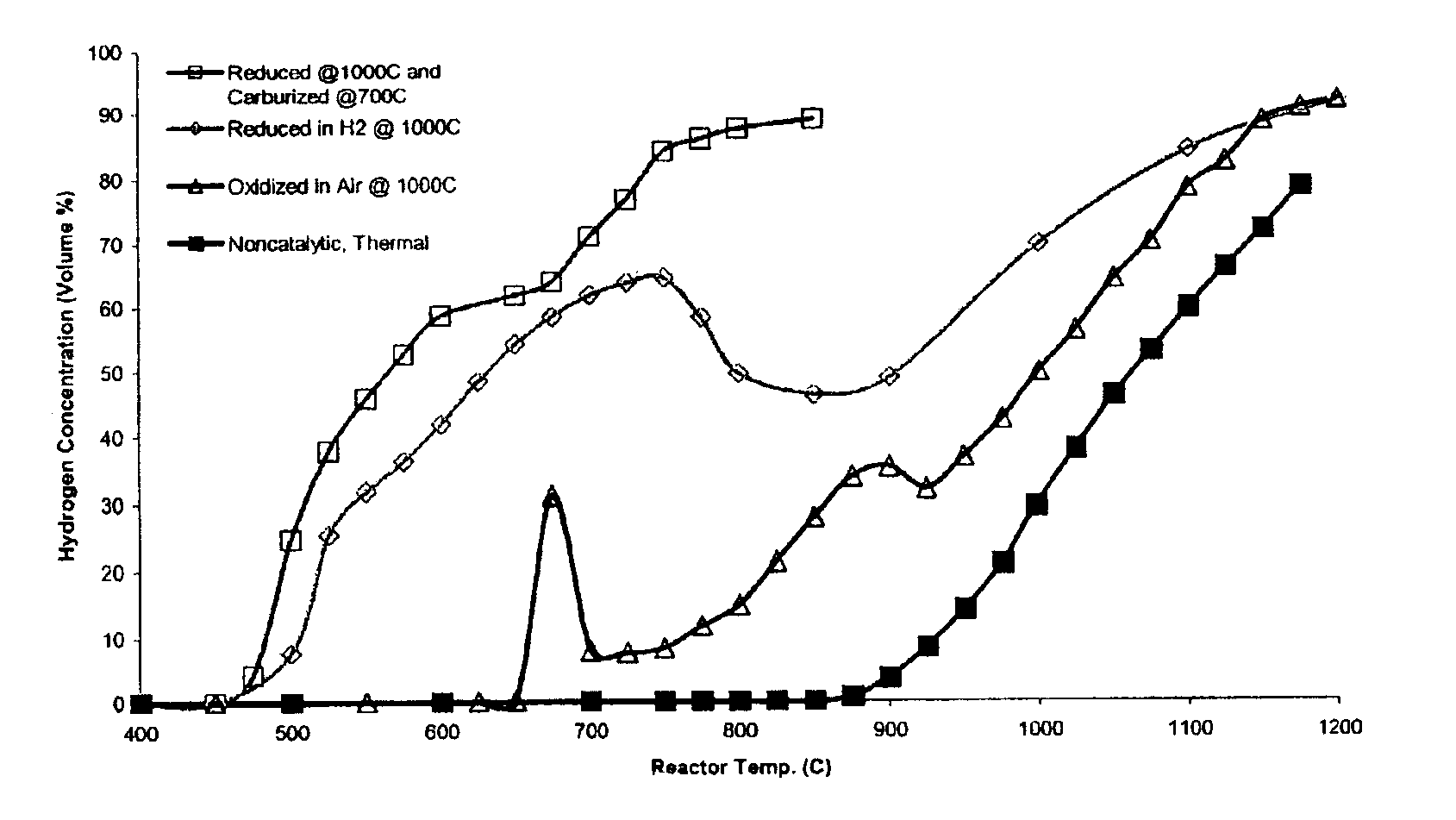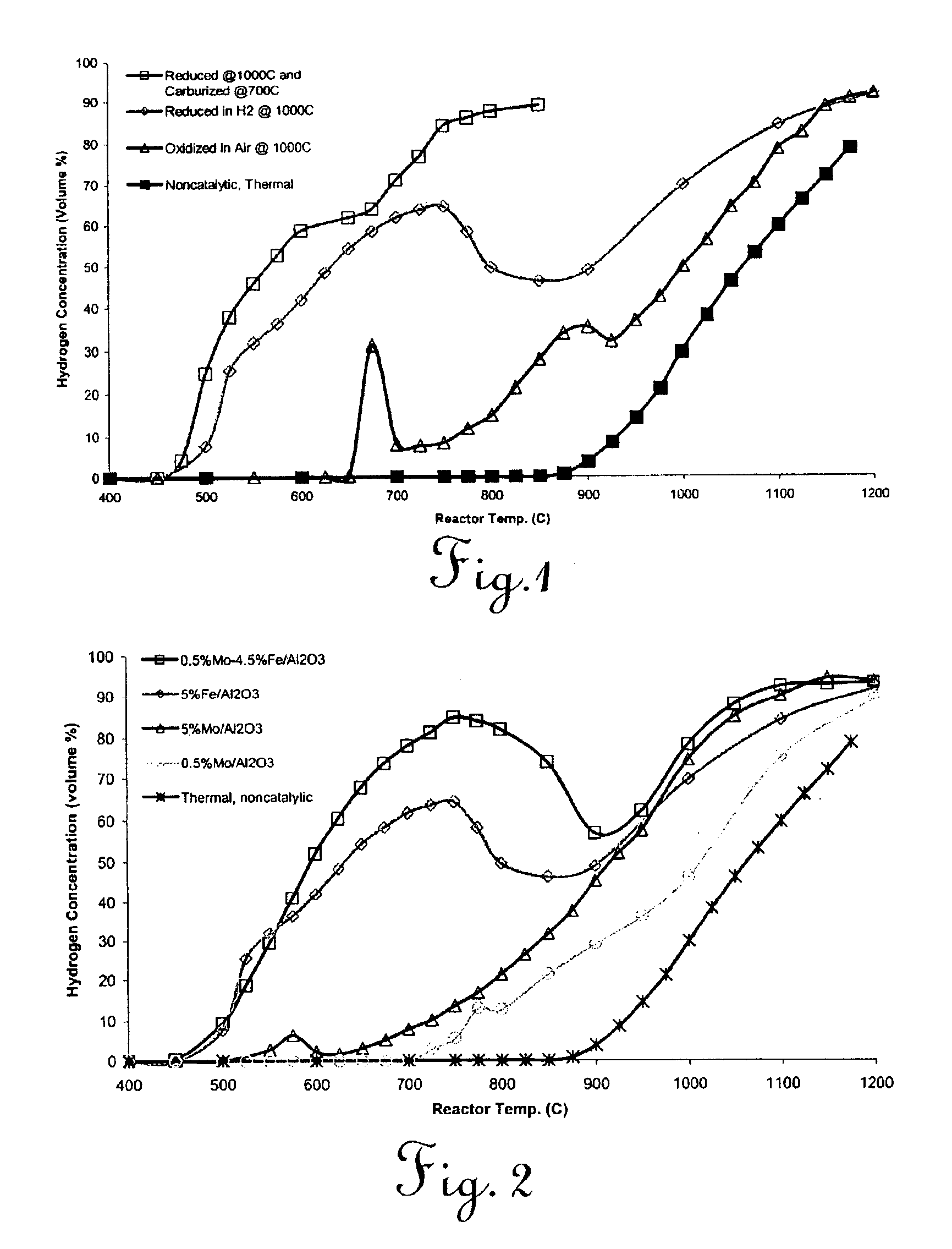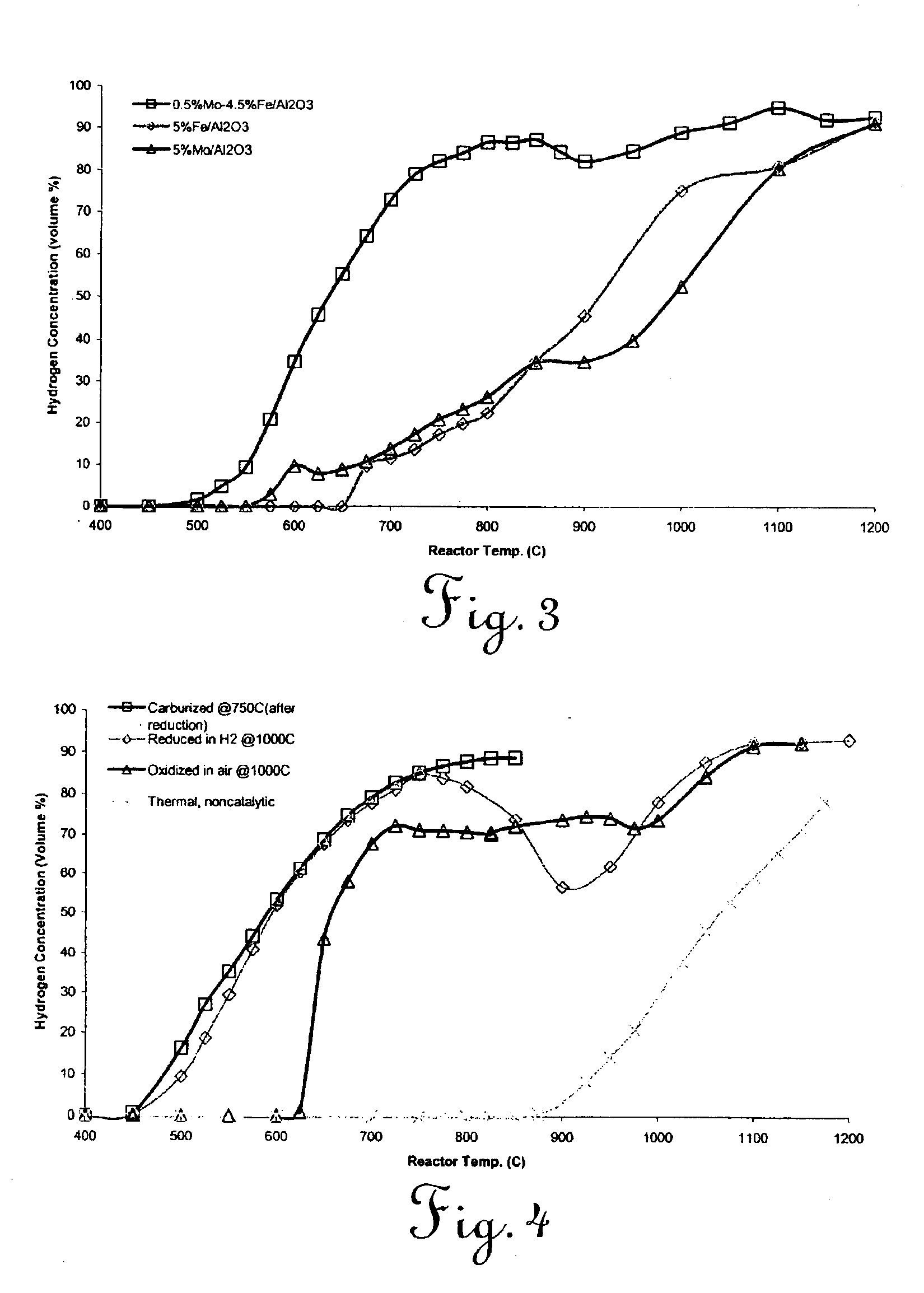Catalytic conversion of hydrocarbons to hydrogen and high-value carbon
a technology of hydrocarbons and catalysts, applied in the direction of catalyst activation/preparation, physical/chemical process catalysts, metal/metal-oxides/metal-hydroxide catalysts, etc., can solve the problems of phase methane, catalysts, foul reactors, and conventional means for hydrogen production
- Summary
- Abstract
- Description
- Claims
- Application Information
AI Technical Summary
Benefits of technology
Problems solved by technology
Method used
Image
Examples
example 1
Supported binary catalysts were prepared by first adding an aqueous solution of catalyst metal salts (Fe(NO3)3·9H2O, (NH4)6Mo7O24)·4H2O, Pd(NO3)2·xH2O, and Ni(NO3)2·6H2O) to a slurry of γ-alumina (150 m2 / gram) and then precipitating metal oxyhydroxide on the alumina by raising the pH of the slurry with ammonia to from about 10 to about 12. The metal (Mo, Pd, Ni and Fe) concentrations were varied from 0.5% to 5% by weight with respect to the alumina support. The slurry was washed with distilled water and dewatered, and the resulting paste was extruded and vacuum dried to form pellets. These pellets were not calcined and showed poor crushing strength. Catalyst pellets were sized to roughly 1.5 mm dia.×4 mm. long.
example 2
Supported binary catalysts are prepared by first adding an aqueous solution of catalyst metal salts, selected in accordance with the catalyst to be prepared from the group consisting of Fe(NO3)3, FeCl3, FeCl2, Fe(OOCCH3)2, (NH4)6Mo7O24), Pd(NO3)2, PdCl2, Ni(NO3)2, and NiCl2 to a dry γ-alumina powder. The metal (Mo, Pd, Ni and Fe) concentrations are varied from 0.5% to 5% by weight with respect to the alumina support. Approximately 30-40 ml of aqueous metal salt solution are required per 100 g alumina powder to achieve the desired consistency of the resulting paste. The paste is then extruded into pellets using conventional technology and vacuum dried. Catalyst pellets are sized to roughly 1.5 mm dia.×4 mm. long. Next, the paste is calcined in air at a temperature of from about 200 to about 500° C. (typically 500° C.) for a period of at least 2 hours (typically overnight).
example 3
All experiments were performed in a fixed bed plug flow 12.57 mm. o.d. quartz reactor of a design known in the art. Ten ml / min methane was passed over one gram of catalyst pellets, prepared as described in Example 1 and supported on a quartz wool plug. For operational safety, the runs were terminated whenever the system back-pressure exceeded 5 psig. It should be appreciated, however, that any suitable reactor may be utilized, and that the flow rate of reactant, pretreatment, and product will be guided by the reactor dimensions.
The entire reactor exit stream was passed through a gas sampling loop of an online gas chromatograph fitted with dual gas flow thermal conductivity detectors (TCD) before venting. TCD sensitivity for hydrogen, methane, carbon monoxide, carbon dioxide, and water was calibrated by analyzing detector response as a function of concentrations of gas mixtures. Initially, the GC analysis runs were made sufficiently long to make sure that higher hydrocarbons (C2H2, C...
PUM
| Property | Measurement | Unit |
|---|---|---|
| temperature | aaaaa | aaaaa |
| temperature | aaaaa | aaaaa |
| temperature | aaaaa | aaaaa |
Abstract
Description
Claims
Application Information
 Login to View More
Login to View More - R&D
- Intellectual Property
- Life Sciences
- Materials
- Tech Scout
- Unparalleled Data Quality
- Higher Quality Content
- 60% Fewer Hallucinations
Browse by: Latest US Patents, China's latest patents, Technical Efficacy Thesaurus, Application Domain, Technology Topic, Popular Technical Reports.
© 2025 PatSnap. All rights reserved.Legal|Privacy policy|Modern Slavery Act Transparency Statement|Sitemap|About US| Contact US: help@patsnap.com



